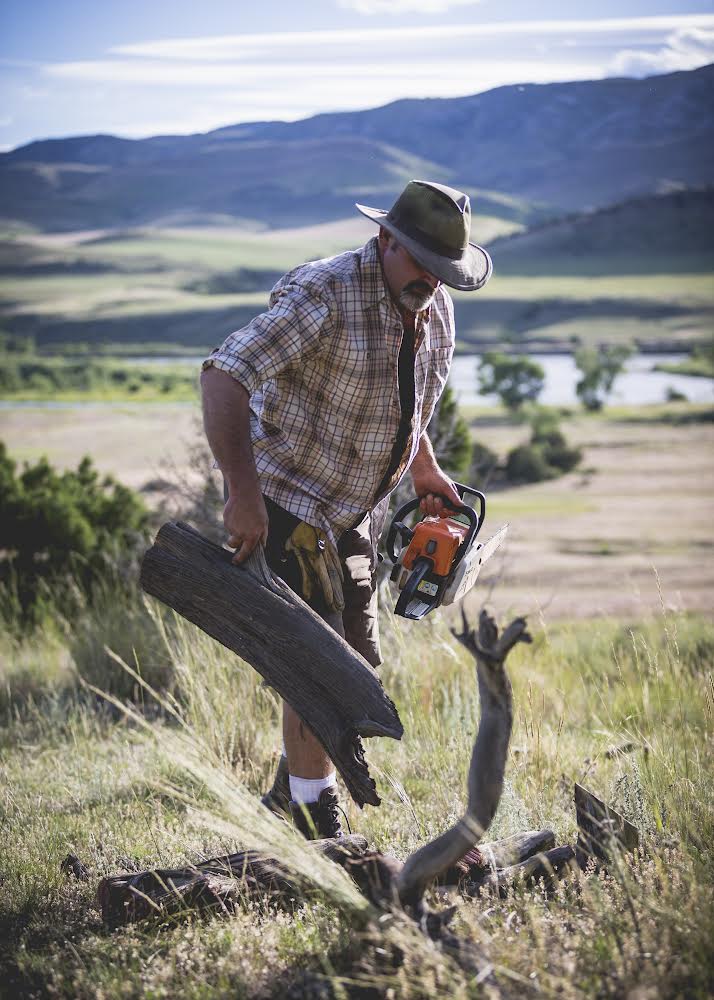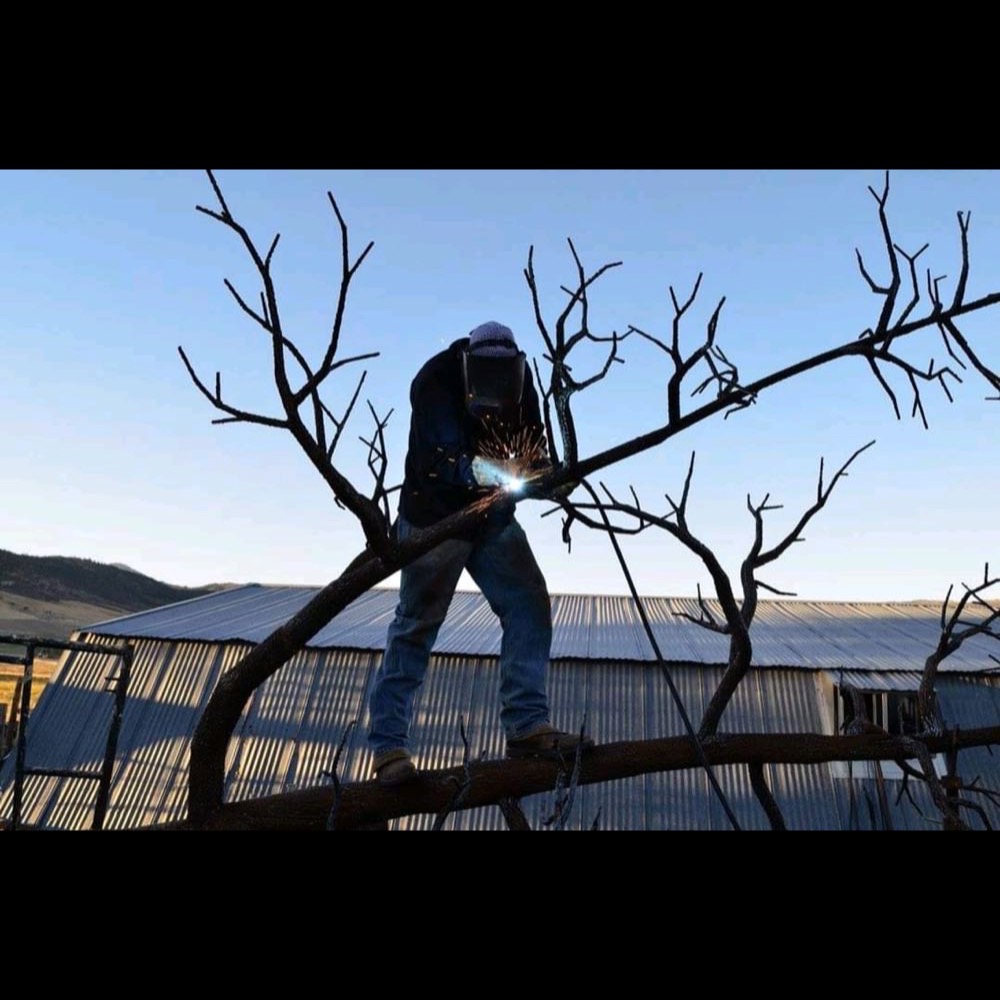This year’s Artist Marketplace of 95 artists includes 16 who are making their first appearance at the Utah Arts Festival. They include Chris Rasmussen of Three Forks, Montana, and Cody Steffler of Lava Hot Springs, Idaho.
CHRIS RASMUSSEN
One of the 16 artists who is making a first appearance at the festival’s Artist Marketplace, Chris Rasmussen (Booth 86) is one of the six artists being represented in this year’s category of woodworking artists. Rasmussen, who says in an interview with The Utah Review that this also is his first show in Utah, lives in a remote Montana area 20 miles north of Three Forks and where the Missouri River starts. With his creative enterprise Cedar Rose Woodworking, Rasmussen works with storm-damaged trees that he has harvested and are turned on a lathe and hand carved and sanded as they are transformed into beautiful, practical sculptural pieces.
Rasmussen says that he finds wood pieces that normally would be overlooked. “I go out into nature and look for pieces either damaged in storms or by beavers,” he explains. “As I think about the sculpture, I focus on balancing order and chaos in nature. Even before I became a professional artists, I always was fascinated by what a wood piece or rotten log looks like inside
I want to dig into it because it helps me understand the surface that much better. It started with being curious in my childhood and eventually I learned more about how I could enhance those differences.”
Rasmussen is self taught, with the exception of taking a high school drawing class and dabbling in storyboards for film with pencil drawing. As he started looking at wood pieces for making his art, he says, “That is when I gave up on 2-D art, for better or worse, and relied on nature to teach me. My major inspiration comes from nature and understanding why we haven’t seen as much as we should and why we overlook so much. It’s an opportunity to reset ourselves in the natural world and infuse our perspective with new ideas.”
For the last six years, he has worked full time as an artist. Prior to that period, he worked numerous jobs, including driving truck for construction. Eventually, he and his wife built a small vegetable farm. A former Salt Lake City resident, he moved out of state in 1996.
Rasmussen says he is patient and willing to let the muse take as much time as needed to capture the piece for what he envisions as a work of art. “It depends upon the pieces of wood I find,” he explains. “There are thousands of trees that have been hit by thunderstorms and all types of wind and weather. And, I’m out there constantly so I know exactly what is happening to them over the years.” But, he also emphasizes that he never rushes to gather a piece of wood even if he already has in mind how it will be transformed into an art piece. If there is a tree limb that looks like it’s ready to fall, he is willing to wait as long as it’s needed before nature has finished the job. For example, he checks regularly on a massive old cottonwood tree limb that blew down two years ago but yet is still attached to the tree. Meanwhile, Rasmussen already has formulated in his mind what he envisions the final piece will look like. “It’s still attached and clinging to life,” he says. “That section will come down. I am just waiting for nature to complete the process on its own. I always keep an eye on what the beavers are doing. I love these trees and there is something very important about the respect and reverence involved and why we should not interfere with the natural processes at work.”
Rasmussen is excited about the festival, looking at it as a homecoming to a city where he has not been for the last quarter of a century.
CODY STEFFLER
One of seven artists represented in the metalworks category for this year’s Artist Marketplace, Cody Steffler (Booth 58), a resident of Lava Hot Springs, Idaho, is among the 16 artists making a first-time appearance at the festival. A second generation metal sculptor, he spent 30 years observing and learning from his father, who died in 2005. Steffler creates three dimensional nature scenes using metal and the colors included are attained by varying degrees of heat and the effects it has on different types of metal. Steffler kindly answered several questions from The Utah Review via email.
TUR: How have you used art media forms in helping to create an holistic body of artistic work that searches for a more complete expression of your own innermost and most powerful states of emotion, inspiration, contemplation, and self-identity?
CS: As an avid outdoorsman, my sculptures reflect an awe for mountains, lakes, rivers, and wildlife. I use my experiences in nature to give me new ideas for my work. I remember after a trip to Zion National Park, I included an arch on one of my mountain scenes. Or maybe just seeing a tree that is unique will inspire me to recreate it in metal.
TUR: What is your training as an artist? Who do you consider your most significant influences and inspirations? Do these influences shift as you progress both in your work and life?
CS: I don’t really have much formal training as an artist besides classes in high school. Most of what I know I learned from my dad, who did metal sculpture for over 40 years. He was diagnosed with leukemia and passed away in 2005 when I was 18. I had worked with him before that but once he was sick he needed my help more and that’s when I really learned how to do the metal work. He would definitely be my biggest influence and inspiration in my work.
TUR: Do you work full-time exclusively as an artist? Or, how do you augment your work as an artist?
CS: I have worked full time as an artist in the past. For the past 10 years or so I have worked full time as well as the artwork. It’s hard to give up the benefits (insurance and retirement) that it provides as well as a steady paycheck. I do like not having to worry about selling art to pay the bills. I can just create artwork and not worry about how much time I’m spending on it.
TUR: Do you find it easy or difficult to start new work? And, typically, how do you prepare yourself to handle both the creative and physical demands of creating your art?
CS: Most of my work is similar as far as usually a lake with mountains and trees. But often I will have special requests that stray away from what I normally do, like a specific mountain range or an animal added into a piece. I recently completed a mountain scene with two people fly fishing a river. To be honest, I usually procrastinate when it comes to something new. By the end of it I’ve usually thought about it so much that physically doing it comes much easier. A lot of my work is very demanding physically. There are hours and hours of grinding into just the lake on a mountain scene. I usually will have to break it up by working on other parts so I don’t get burnt out physically.
TUR: With regard to participating in the Utah Arts Festival, please share your feelings about being a part of this enterprise? Have you been in other festivals and do you plan to explore other festival venues?
CS: I’m excited to experience the Utah Arts Festival. This will be my first year. Working full time limits my ability to travel much for shows, so I usually stick close to home which I prefer anyway. The only other show I have done consistently is the Sweet Pea Festival in Bozeman, Montana.





